‘I drew a heart that was filled with food and smiling children at school’
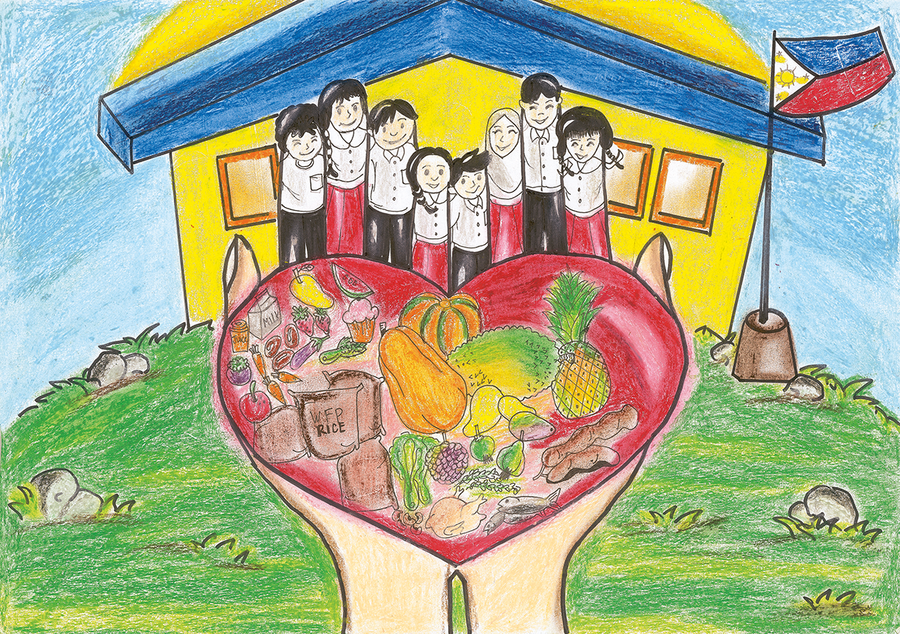
Every year hundreds of inventive artworks are submitted by school pupils from around the world, for the World Food Programme's (WFP) annual Children's Design Competition.
This year was no exception, with a host of entries whittled down to 130, from 27 of the countries where WFP runs school feeding programmes, supplies nutritious snacks to schools, or supports governments undertaking feeding schemes. Of these, 20 have been picked as winners, with a further nine awarded ‘special mentions'.

Among them is Amihan D. Limbona from the Philippines, who said: "I drew a heart that filled with food and smiling children at school.
"The heart symbolizes health and love because I believe that ‘health is wealth' — children are happier and healthier when they eat the right food at the right time."
In 2018, 16.4 million schoolchildren benefited from nutritious WFP meals and snacks. We also helped 65 governments build capacity, leading to improved national school feeding programmes for another 39 million children.
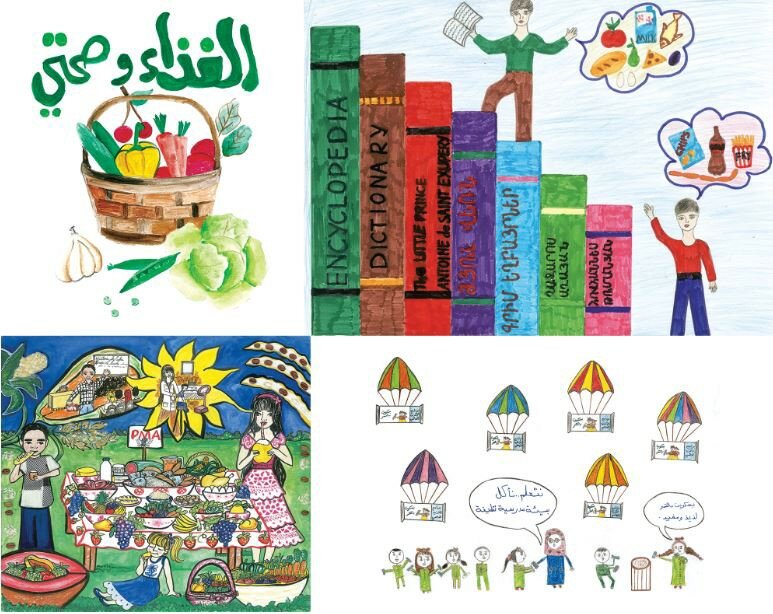
"My drawing portrays the importance of a meal at school," says Cyrus Cariaga Bujicos, a 12 year old at the Central Edcor Elementary in Buldon, Maguindanao province, in the Philippines. In his artwork, pictured below, "parents show their love and passion as they prepare the food for the school children".

With nutritious foods, he adds, "children become more attentive and active in classroom activities". What's more, "eating school meals promotes good eating habits and means children from remote areas are encouraged to go to school every day".
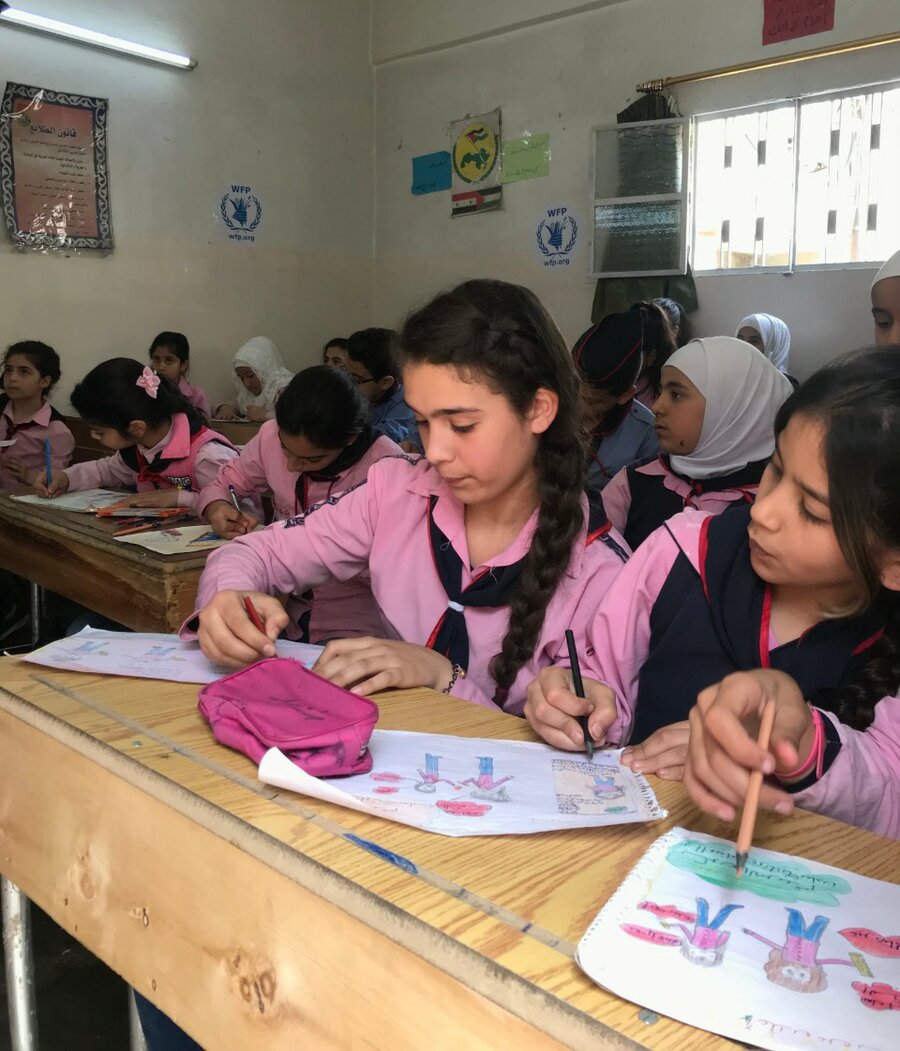
Kicking off the competition in October 2018, WFP asked children: "Why is having a meal at school important to you."
Using crayons, felt-tip pens and watercolours, children in countries such as Cuba, Yemen and Kyrgyzstan responded with depictions of pupils, classrooms, crops, vegetables and even a slow-coach hotdog lagging behind a fast-running carrot.

Today we publish the 20 winning artworks. Artists each receive US$100 to spend on art materials while their schools receive US$200.
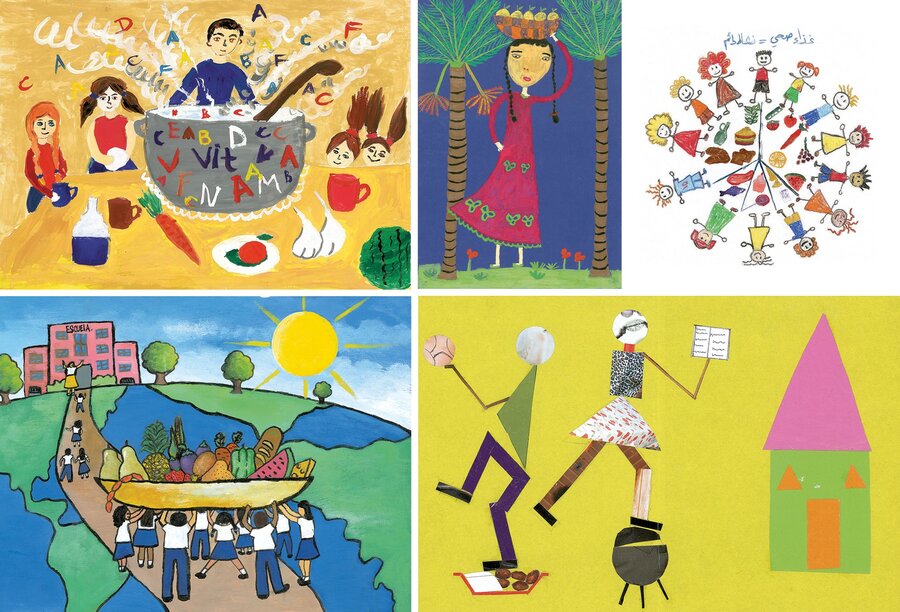
The artworks will be featured in programmes, projects and products, blown up into posters for major events and in various corporate campaigns throughout the year. WFP-branded merchandise such as greeting cards, calendars, desk diaries, bookmarks, T-shirts, shopping bags and mugs will also be emblazoned with the winning entries.
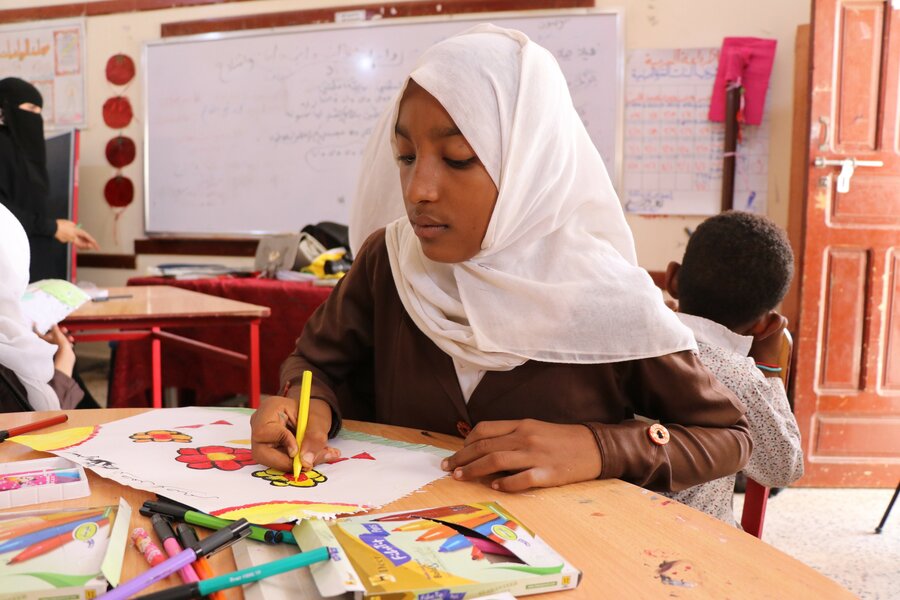
"The competition opens a hugely important dialogue between WFP and the young pupils we serve around the globe," said Corinne Woods, director of WFP's Communications, Advocacy and Marketing division. She added that through both the children's drawings and their written comments on what school feeding has brought to their lives, "we can gain invaluable insights about who they are and what they need."
All artworks © WFP 2019
